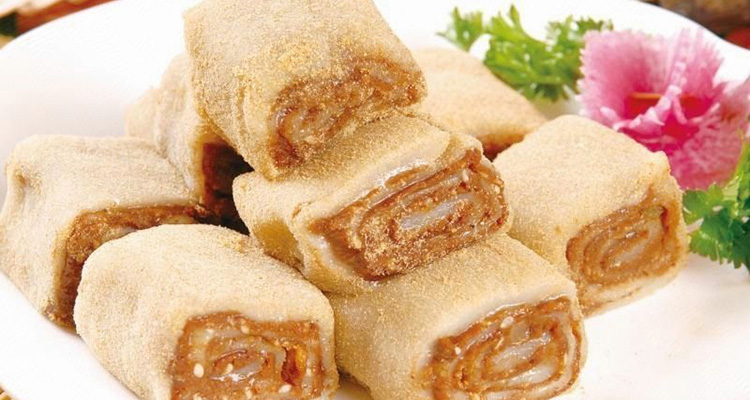ZhiLanzhai Rice Cakes: 80 Years of Tianjin Tradition
Introduction
In Tianjin’s bustling streets there’s a quiet, comforting flavor that has lingered for generations: ZhiLanzhai gaogan, a white, cloud-like rice cake made from Xiaozhan rice and glutinous rice. Soft, subtly fragrant, and filled with sweet bean paste, hawthorn or sesame-sugar, it’s an edible piece of Tianjin history.
1.Origins: Fei Xiaozeng and the ZhiLanzhai Story
ZhiLanzhai’s story began in the 1940s when master baker Fei Xiaozeng founded the shop in Tianjin. The name “ZhiLanzhai” evokes refinement and good character; Fei aimed to reflect that ethos in his rice cakes. Affordable and made from humble ingredients, these rice cakes became a beloved everyday snack and a local culinary icon over eight decades.

2.Cultural Significance: A Working-City Staple
Gaogan is more than a snack in Tianjin—it’s a cultural symbol. It fueled dockworkers and vendors, appeared at tea breaks, and represents the practical, warm spirit of Tianjin life. Tasting a ZhiLanzhai rice cake is like paging through a living local history book.
3.Ingredients: Xiaozhan Rice and the Perfect Blend
The secret starts with Tianjin Xiaozhan rice, once tribute rice in imperial times, prized for its translucent, springy texture. Combined with glutinous rice in a special ratio and milled into a fine rice flour, this blend gives the cake its signature softness. Classic fillings include smooth red bean paste, tangy hawthorn (hongguo), and aromatic sesame with sugar.
4.Craftsmanship: Traditional Hand Techniques
Making authentic gaogan is a hands-on process. Rice is soaked, drained, then stone-milled into ultra-fine flour. A thin layer of rice flour lines wooden molds, a measured spoonful of filling is added, then covered with more rice flour and smoothed. Cakes steam over high heat until set. Finally, a light dusting of roasted flour keeps pieces from sticking and gives the cake its snowy look—the origin of the name “gaogan.”
5.Flavor and Texture: A Delicate Sweet Encounter
Fresh from the steamer, gaogan emanates a gentle rice aroma. Pearly white and pillowy, it yields easily to the tongue and melts, releasing rice’s pure sweetness. The filling creates a lively contrast—bean paste’s mellow sugar, hawthorn’s bright tang, or sesame-sugar’s toasty depth—resulting in layered, not cloying, flavors.

6.How to Enjoy: Best Moments and Pairings
Best time to eat: Buy and eat fresh—right out of the steamer is ideal. If refrigerated, re-steam briefly at home to restore softness.
Classic pairing: Jasmine tea balances the cake’s sweetness and is a traditional Tianjin afternoon-tea match.
Creative variations: Chill briefly for an ice-cream-like cool bite, or pan-sear lightly for a crisp exterior.
Traveler Tips: Finding Authentic ZhiLanzhai
Look for long-standing shops and the ZhiLanzhai sign in areas like Ancient Culture Street or Nanshi Food Street. Authentic cakes are made daily and sold by pieces or boxes; check freshness when buying. If possible, watch the artisans at work for a memorable cultural glimpse.
7.Simple Home Version: A Quick DIY Taste
Though shop-made gaogan has a unique hand-crafted quality, you can try a home version:
Ingredients: 150g rice flour, 50g glutinous rice flour, about 100ml water, red bean paste filling.
Steps: Mix flours, add water slowly until crumbly yet cohesive. Press into small molds, add filling, cover, and steam 15–20 minutes. Dust with a little toasted rice flour when warm.
Conclusion
ZhiLanzhai gaogan is a small, snowy cake that carries Tianjin’s culinary memory. Whether you taste it at a historic stall or try a homemade version, this soft, sweet rice cake is a gentle and authentic way to experience Tianjin. When in Tianjin, don’t miss a warm piece of ZhiLanzhai rice cake—let it be a highlight of your culinary journey.


